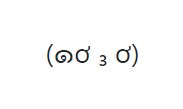第二篇: Archaeological discoverie..-阿摩線上測驗
【系統公告】頁面上方功能列及下方資訊全面更換新版,『舊用戶且擁有VIP』可再切回舊版。 前往查看
 | 吃貨 大二下 (2024/05/02): During the 1920s, dancing for amusement started gaining wider acceptance, and the number of newly invented dances soared. In America, this obsession was the foundation of a novel competition: the dance marathon, where contestants showed off their dancing skills and physical endurance. During every hour, couples would dance for 45 minutes and then take a 15-minute break.(A) It was not unusual for these marathons to last for weeks or even months! The longest one ended after 5,152 hours (B), and the winning pair got $2,000, about 1.5 times the average of American’s annual salary at the time! (D)
49. What is true about the dancing marathon in America?
(A) The hourly time ratio of dancing and rest was about 4 to 1. 45:15=3:1
(B) The all-time lengthiest one lasted for about seven months. 5,152/24(天數)/30(月數)=7.1555
(C) The competition was once written into a story as a book.
(D) The prize money of the record-long contest was rather humble. 1.5倍美國人平均年薪,一點都不humble!!
| 檢舉 |
|
|
|